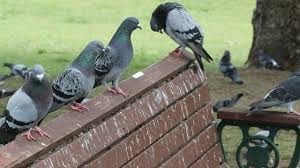
by Pigeon Patrol | Apr 29, 2020 | 4-S Gel Bird repellent, Animal Deterrent Products, Bird Deterrent Products, Bird Netting, Bird Spike, Bird Spikes, Pigeon Control, Pigeon Droppings, Pigeon Patrol's Services, Pigeon Spikes, Pigeons in the News, UltraSonic Bird Control

A new pigeon prohibition in a North Vancouver community has roused suspicions that a councillor’s continued grudge against the birds has led to a serious conflict of interest.
Thursday, in response to concerns from the public, district Mayor Mike Little ordered an independent investigation into the events leading up to and the passage the controversial ban known as the “Pigeon Prohibition Bylaw.” It bans residents from harbouring what some consider intelligent animals (who mate for life!), and others believe are rats with wings.
The chief administrative officer will look into the conduct of all councillors, including Little.
The pigeon squabble started almost three years ago, when Kulwant Dulay and his multi-generational family moved to the north shore neighbourhood and transformed a dilapidated backyard chicken coop into a charming miniature cottage for his homing pigeons.
“I fixed it up. I wash the coop every week. I keep it clean. There’s no smells at all,” Dulay told councillors Nov. 18. He and his family wash the pigeons and clean up their droppings.
His neighbour, councillor Betty Forbes, saw the situation differently. She declined to comment, as the independent review is being conduct and therefore would not be “appropriate.”
Others were concerned about pigeons causing damage with their frequent acidic poops, and the possibility they could spread disease. Corrie Kost said his parents final years in their lake-side apartment would’ve been more pleasant if it weren’t for the pigeons pestering them.
The pigeon prohibition will come into effect May 2020.
To view the full story please visit Huffingtonpost
About Pigeon Patrol:
Pigeon Patrol Products & Services is the leading manufacturer and distributor of bird deterrent (control) products in Canada. Pigeon Patrol products have solved pest bird problems in industrial, commercial, and residential settings since 2000, by using safe and humane bird deterrents with only bird and animal friendly solutions. At Pigeon Patrol, we manufacture and offer a variety of bird deterrents, ranging from Ultra-flex Bird Spikes with UV protection, Bird Netting, 4-S Gel and the best Ultrasonic and audible sound devices on the market today.
Contact us at 1- 877– 4– NO-BIRD, (604) 585-9279 or visit our website at www.pigeonpatrol.ca
Bird Gone, Pigeon Gone, Seagull Gone, Pigeon problems, pigeon spikes, 1-877-4NO-BIRD, 4-S Gel, Bird Control, Pigeon Control, bird repellent, Bird Spikes, sonic bird repellent, stainless steel bird spikes, bird spikes Vancouver, Ultra Sonic Bird Control, Bird Netting, Plastic Bird Spikes, Canada bird spike deterrents, Pigeon Pests, B Gone Pigeon, Pigeon Patrol, pest controller, pest control operator, pest control technician, Pigeon Control Products, humane pigeon spikes, pigeon deterrents, pigeon traps, Pigeon repellents, Sound & Laser Deterrents, wildlife control, raccoon, skunk, squirrel deterrent, De-Fence Spikes, Dragons Den, Canada bird spikes, Canada pigeon, pigeon control, pidgon patrol, pidgon. Kill pigeons, crow, starling
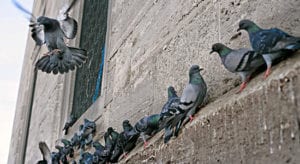
by Pigeon Patrol | Apr 22, 2020 | 4-S Gel Bird repellent, Animal Deterrent Products, Bird Deterrent Products, Bird Netting, Bird Spike, Bird Spikes, Pigeon Control, Pigeon Droppings, Pigeon Patrol's Services, Pigeon Spikes, Pigeons in the News, UltraSonic Bird Control
Shadick doesn’t much care for pigeons, but she doesn’t want them to suffer.
When the wildlife rehabilitation organization she operates began receiving more and more calls about apparently-poisoned pigeons, Shadick decided to act. She wants the city to ban pest control products that affect the birds’ nervous systems.
“Pigeons are coming in suffer from seizures,” Shadick said, adding that 34 of the 54 bird-related cases Living Sky Wildlife Rehabilitation has dealt with this year involved pigeons with such symptoms. Around half did not survive, she said.
“These are only the pigeons that survive long enough to be found,” she noted, wondering what happens to birds and animals that decide to dine on a pigeons that has suffer ingested the product and died somewhere accessible.
While Shadick admitted that she does not have direct evidence linking pigeons showing seizure symptoms with any specific pest control product, she nevertheless made her case for a ban in a letter to the city’s environment committee.
“While I understand that many people consider pigeons to be a pest and want to get rid of them, the use of neurotoxins is not a humane process, nor is it acceptable to risk putting that poison into our environment,” Shadick wrote.
She said she is especially concerned about a product called Avitrol, which, according to its manufacturer, uses the compound 4-aminopyridine to induce “behaviours similar to an epileptic seizure” that are intended to frighten away flocks of birds.
The symptoms “may include flying erratically, vocalizing, trembling, dilation of the pupils and other symptoms,” according to Avitrol Corp. The Tulsa, Oklahoma-based company did not immediately provide a comment on Thursday.
Pigeons are known pests that can cause damage to private property as well as municipal infrastructure. However, Saskatoon’s electrical utility said Thursday it has not used “chemical repellents” for pigeon control at its facilities since 2017.
In 2016, the federal government granted “continued registration” of products containing 4-aminopyridine for use on birds, including “feral pigeons.” At the time, the only such products available were all manufactured and sold under the name Avitrol.
Health Canada said the products do “not present unacceptable risks to human health or the environment” if used properly.
While Avitrol is legal to use in Canada, some municipalities in the country have opted to cease using it. The cities of Red Deer and Halifax have both committed to no longer using Avitrol. It is also banned in New York and San Francisco.
“I don’t think it’s very nice for the pigeons at all. It’s not a pleasant way to live — or to die. I don’t think any animal deserves that, even if we don’t like it,” Shadick said, noting that there are viable alternatives that stop the birds from reproducing.
This is not the first time Shadick has advocated against poisoning pests. Late last fall, a dead great-horned owl with blood around its beak led her to warn people about the dangers of using anti-clotting agents to poison rodents. amacpherson@postmedia.com twitter.com/macphersona
About Pigeon Patrol:
Pigeon Patrol Products & Services is the leading manufacturer and distributor of bird deterrent (control) products in Canada. Pigeon Patrol products have solved pest bird problems in industrial, commercial, and residential settings since 2000, by using safe and humane bird deterrents with only bird and animal friendly solutions. At Pigeon Patrol, we manufacture and offer a variety of bird deterrents, ranging from Ultra-flex Bird Spikes with UV protection, Bird Netting, 4-S Gel and the best Ultrasonic and audible sound devices on the market today.
Contact us at 1- 877– 4– NO-BIRD, (604) 585-9279 or visit our website at www.pigeonpatrol.ca
Bird Gone, Pigeon Gone, Seagull Gone, Pigeon problems, pigeon spikes, 1-877-4NO-BIRD, 4-S Gel, Bird Control, Pigeon Control, bird repellent, Bird Spikes, sonic bird repellent, stainless steel bird spikes, bird spikes Vancouver, Ultra Sonic Bird Control, Bird Netting, Plastic Bird Spikes, Canada bird spike deterrents, Pigeon Pests, B Gone Pigeon, Pigeon Patrol, pest controller, pest control operator, pest control technician, Pigeon Control Products, humane pigeon spikes, pigeon deterrents, pigeon traps, Pigeon repellents, Sound & Laser Deterrents, wildlife control, raccoon, skunk, squirrel deterrent, De-Fence Spikes, Dragons Den, Canada bird spikes, Canada pigeon, pigeon control, pidgon patrol, pidgon. Kill pigeons, crow, starling

by Pigeon Patrol | Apr 22, 2020 | 4-S Gel Bird repellent, Animal Deterrent Products, Bird Deterrent Products, Bird Netting, Bird Spike, Bird Spikes, Pigeon Control, Pigeon Droppings, Pigeon Patrol's Services, Pigeon Spikes, Pigeons in the News, UltraSonic Bird Control
Pigeon build-up cited in bridge collapse. St. PAUL, Minn.–Pounded and strained by heavy traffic and weakened by missing bolts and cracking steel, the failed interstate bridge over the Mississippi River also faced a less obvious enemy: Birds, specifically pigeons.
Inspectors began documenting the build-up of pigeon dung on the span near downtown Minneapolis two decades ago.
Experts say the corrosive guano deposited all over the bridge’s framework helped the steel beams rust faster.
Although investigators have yet to identify the cause of the bridge’s Aug. 1 collapse, which killed at least 13 people and injured about 100, the pigeon problem is one of many factors that dogged the structure.
“There is a coating of pigeon dung on steel with nest and heavy build-up on the inside hollow box sections,” inspectors wrote in a 1987-1989 report.
In 1996, screens were installed over openings in the bridge’s beams to keep pigeons from nesting there, but that didn’t prevent the build-up of droppings elsewhere.
Pigeon droppings contain ammonia and acids, said chemist Neal Langerman, of the American Chemical Society. If the dung isn’t washed away, it dries out and turns into a concentrated salt. When water gets in and combines with the salt and ammonia, it creates small electrochemical reactions that rust the steel underneath.
“Every time you get a little bit of moisture there, you wind up having a little bit of electrochemistry occurring and you wind up with corrosion,” said Langerman. “Over a long term, it might in fact cause structural weaknesses.”
Source
About Pigeon Patrol:
Pigeon Patrol Products & Services is the leading manufacturer and distributor of bird deterrent (control) products in Canada. Pigeon Patrol products have solved pest bird problems in industrial, commercial, and residential settings since 2000, by using safe and humane bird deterrents with only bird and animal friendly solutions. At Pigeon Patrol, we manufacture and offer a variety of bird deterrents, ranging from Ultra-flex Bird Spikes with UV protection, Bird Netting, 4-S Gel and the best Ultrasonic and audible sound devices on the market today.
Contact us at 1- 877– 4– NO-BIRD, (604) 585-9279 or visit our website at www.pigeonpatrol.ca
Bird Gone, Pigeon Gone, Seagull Gone, Pigeon problems, pigeon spikes, 1-877-4NO-BIRD, 4-S Gel, Bird Control, Pigeon Control, bird repellent, Bird Spikes, sonic bird repellent, stainless steel bird spikes, bird spikes Vancouver, Ultra Sonic Bird Control, Bird Netting, Plastic Bird Spikes, Canada bird spike deterrents, Pigeon Pests, B Gone Pigeon, Pigeon Patrol, pest controller, pest control operator, pest control technician, Pigeon Control Products, humane pigeon spikes, pigeon deterrents, pigeon traps, Pigeon repellents, Sound & Laser Deterrents, wildlife control, raccoon, skunk, squirrel deterrent, De-Fence Spikes, Dragons Den, Canada bird spikes, Canada pigeon, pigeon control, pidgon patrol, pidgon. Kill pigeons, crow, starling
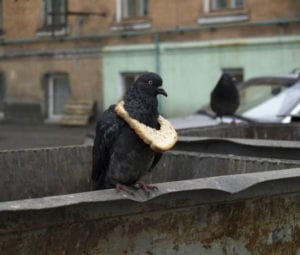
by Pigeon Patrol | Apr 22, 2020 | 4-S Gel Bird repellent, Animal Deterrent Products, Bird Deterrent Products, Bird Netting, Bird Spike, Bird Spikes, Pigeon Control, Pigeon Droppings, Pigeon Patrol's Services, Pigeon Spikes, Pigeons in the News, UltraSonic Bird Control
Conwy Road Bridge repair bill rises as pigeon poo hides rust.

Pigeon with a bread necklace. A new symbol of wealth among pigeon flocks.
Bridge repair costs have more than doubled because pigeon poo disguised rust.
Council officials struck a deal for the work on Conwy Road Bridge in 2016.
Costs shot up by £844,000 to £1.53m after an inspection revealed rust on the structure was hidden by the birds’ droppings.
Conwy council chief executive Iwan Davies said it was not possible to identify the extent of the works but a councillor said it was “disappointing”.
Repairs for the two lane bridge, which takes traffic across the town’s estuary, were sent out to tender in 2016.
A report by the council’s audit committee said the “considerable” extra work needed had not been found originally because of “access” problems.
“The additional works…significantly impacted the total cost of the works,” the report said.
Gele ward councillor Andrew Wood said: “I can’t believe we’ve not made more of an issue about this refurbishment, it’s plus £844,000.
“If the council tendered with all that information in the first place then it would have cost less. But we’re in a situation now where we have to carry on, so I’m disappointed.”
Mr Davies added: “It wasn’t an overspend as such, it was a re-calibration of what needed to be done.”
Source
About Pigeon Patrol:
Pigeon Patrol Products & Services is the leading manufacturer and distributor of bird deterrent (control) products in Canada. Pigeon Patrol products have solved pest bird problems in industrial, commercial, and residential settings since 2000, by using safe and humane bird deterrents with only bird and animal friendly solutions. At Pigeon Patrol, we manufacture and offer a variety of bird deterrents, ranging from Ultra-flex Bird Spikes with UV protection, Bird Netting, 4-S Gel and the best Ultrasonic and audible sound devices on the market today.
Contact us at 1- 877– 4– NO-BIRD, (604) 585-9279 or visit our website at www.pigeonpatrol.ca
Bird Gone, Pigeon Gone, Seagull Gone, Pigeon problems, pigeon spikes, 1-877-4NO-BIRD, 4-S Gel, Bird Control, Pigeon Control, bird repellent, Bird Spikes, sonic bird repellent, stainless steel bird spikes, bird spikes Vancouver, Ultra Sonic Bird Control, Bird Netting, Plastic Bird Spikes, Canada bird spike deterrents, Pigeon Pests, B Gone Pigeon, Pigeon Patrol, pest controller, pest control operator, pest control technician, Pigeon Control Products, humane pigeon spikes, pigeon deterrents, pigeon traps, Pigeon repellents, Sound & Laser Deterrents, wildlife control, raccoon, skunk, squirrel deterrent, De-Fence Spikes, Dragons Den, Canada bird spikes, Canada pigeon, pigeon control, pidgon patrol, pidgon. Kill pigeons, crow, starling
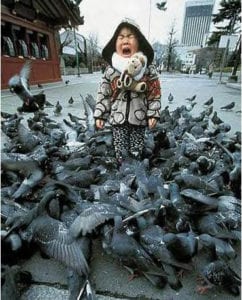
by Pigeon Patrol | Apr 22, 2020 | 4-S Gel Bird repellent, Animal Deterrent Products, Bird Deterrent Products, Bird Netting, Bird Spike, Bird Spikes, Pigeon Control, Pigeon Droppings, Pigeon Patrol's Services, Pigeon Spikes, Pigeons in the News, UltraSonic Bird Control
Some public areas in Japan such as parks and gardens can be highly contaminated with pigeons feces. We examined levels of four bacterial contaminations in fecal samples from feral pigeons in 7 prefectures. We isolated Salmonella Typhimurium and S. Cerro from 17 (3.9%) of 436 samples, as well as Mycobacterium spp. including M. avium-intracellulare complex from 29 (19.0%) of 153 samples. The polymerase chain reaction detected Chlamydia psittaci and C. pecorum in 106 (22.9%) of 463 samples, but E. coli O-157 was not isolated from any of the samples. Our results indicate that pigeon feces are a source of several zoonotic agents for birds, animals and humans.

Source
About Pigeon Patrol:
Pigeon Patrol Products & Services is the leading manufacturer and distributor of bird deterrent (control) products in Canada. Pigeon Patrol products have solved pest bird problems in industrial, commercial, and residential settings since 2000, by using safe and humane bird deterrents with only bird and animal friendly solutions. At Pigeon Patrol, we manufacture and offer a variety of bird deterrents, ranging from Ultra-flex Bird Spikes with UV protection, Bird Netting, 4-S Gel and the best Ultrasonic and audible sound devices on the market today.
Contact us at 1- 877– 4– NO-BIRD, (604) 585-9279 or visit our website at www.pigeonpatrol.ca
Bird Gone, Pigeon Gone, Seagull Gone, Pigeon problems, pigeon spikes, 1-877-4NO-BIRD, 4-S Gel, Bird Control, Pigeon Control, bird repellent, Bird Spikes, sonic bird repellent, stainless steel bird spikes, bird spikes Vancouver, Ultra Sonic Bird Control, Bird Netting, Plastic Bird Spikes, Canada bird spike deterrents, Pigeon Pests, B Gone Pigeon, Pigeon Patrol, pest controller, pest control operator, pest control technician, Pigeon Control Products, humane pigeon spikes, pigeon deterrents, pigeon traps, Pigeon repellents, Sound & Laser Deterrents, wildlife control, raccoon, skunk, squirrel deterrent, De-Fence Spikes, Dragons Den, Canada bird spikes, Canada pigeon, pigeon control, pidgon patrol, pidgon. Kill pigeons, crow, starling
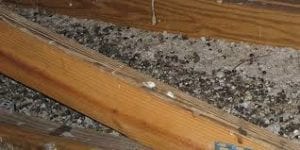
by Pigeon Patrol | Apr 22, 2020 | 4-S Gel Bird repellent, Animal Deterrent Products, Bird Deterrent Products, Bird Netting, Bird Spike, Bird Spikes, Pigeon Control, Pigeon Droppings, Pigeon Patrol's Services, Pigeon Spikes, Pigeons in the News, UltraSonic Bird Control

Pigeon Droppings & Waste in an Attic. The problems with bird or pigeon droppings, or any animal droppings, for that matter in an attic is fourfold. First of all, the droppings tend to grow fungus or mold over time.
This mold can often release airborne spores that the people inside the home can breathe, leading to lung infections such as histoplasmosis.
The second problem with pigeon waste in the attic is that the scent can actually attract new wildlife into your home.
Whether it’s the same species looking for a mate, or to beat the competition, or is simply drawn to a proven bat home, they will be drawn in.
Some animal droppings and urine actually contain pheromones meant to attract more animals.
Droppings can also attract predators. The third problem is that the droppings are often laced with diseases that humans can catch. The fourth problem is that the droppings may make your home smell bad.
However, this is a lesser concern. You may want attic decontamination or even animal insulation replacement if you have animal waste in the attic, especially pigeon droppings.
About Pigeon Patrol
Pigeon Patrol Products & Services is the leading manufacturer and distributor of bird deterrent (control) products in Canada. Pigeon Patrol products have solved pest bird problems in industrial, commercial, and residential settings since 2000, by using safe and humane bird deterrents with only bird and animal friendly solutions.
At Pigeon Patrol, we manufacture and offer a variety of bird deterrents, ranging from Ultra-flex Bird Spikes with UV protection, Bird Netting, 4-S Gel and the best Ultrasonic and audible sound devices on the market today.
Contact us at 1- 877– 4– NO-BIRD, (604) 585-9279 or visit our website at www.pigeonpatrol.ca
Bird Gone, Pigeon Gone, Seagull Gone, Pigeon problems, pigeon spikes, 1-877-4NO-BIRD, 4-S Gel, Bird Control, Pigeon Control, bird repellent, Bird Spikes, sonic bird repellent, stainless steel bird spikes, bird spikes Vancouver, Ultra Sonic Bird Control, Bird Netting, Plastic Bird Spikes, Canada bird spike deterrents, Pigeon Pests, B Gone Pigeon, Pigeon Patrol, pest controller, pest control operator, pest control technician, Pigeon Control Products, humane pigeon spikes, pigeon deterrents, pigeon traps, Pigeon repellents, Sound & Laser Deterrents, wildlife control, raccoon, skunk, squirrel deterrent, De-Fence Spikes, Dragons Den, Canada bird spikes, Canada pigeon, pigeon control, pidgon patrol, pidgon. Kill pigeons, crow, starling







